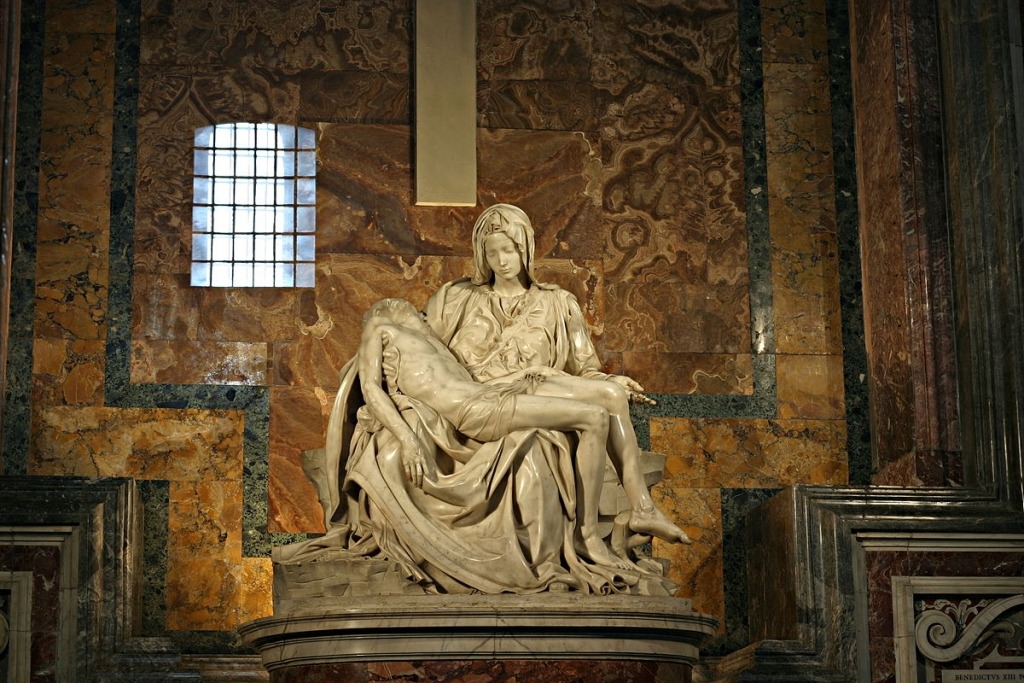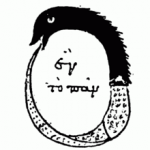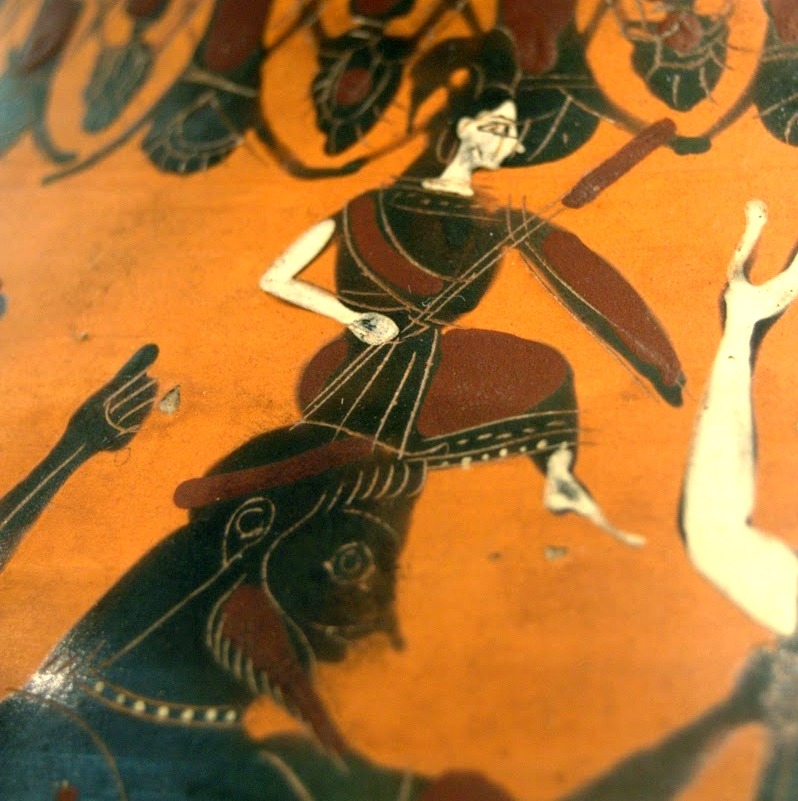Originally posted on July 24, 2018 at alexanderblum.net | LINK HERE
HUMAN BEINGS ARE AN ALCHEMICAL MIXTURE of masculine and feminine. Some err on the extreme ends of these polarities, many fall somewhere between. Queer and transgender people have found gender to be an infinite paradox – the deeper you investigate, the deeper it goes.
Is chaos feminine? Is order masculine? It’s difficult to ask the question because Western culture has placed such negative emphasis on the concept of ‘chaos’. Rather than ‘novelty’ or ‘creation’ it instead carries connotations of neuroticism and collapse. The early Church Fathers of Christianity, such as Saint Augustine, believed in the doctrine of the privatio boni, or the teaching that only good has substance, and that evil is the mere lack of good. It is my contention that evil, chaos, darkness and other negative substances have been exorcised by the Western mind out of the Christian disposition – and that exorcism harmed our ability to think clearly about what the nature of the world truly is.
Order, on the other hand, is perceived to be exclusively good – but Dostoevsky never thought so. In Notes From Underground, Dostoevsky likened the perfect scientific civilization to a “crystal palace” that would produce not order and wellbeing but spiritual rebellion. If people could be fully understood by science, Dostoevsky believed, the very fact that our total decoding is possible would lead people to rebel against the systems that sought to determine their future. Choosing between an algorithm that knows us better than our own thoughts, or a reaction against such forms of all-knowing technocracy, Dostoevsky predicted backlash.
Archetypal ideas, of course, are deeply paradoxical because they reflect the psyche as it actually is. We see that order produces chaos (the fine physics behind the formation of the atomic bomb) and chaos produces order (mass extinctions leading to the flourishing of new, more complex species).
To premodern people, especially those who lived outside the structures of traditional Christianity, this paradox was not so controversial. The Hindu deities are both creators and destroyers, monstrous titans and the peaks of meditation rolled into one. Too much order, too much hyper-masculine emphasis on hierarchy and power, and a culture reaps catastrophes like climate change, ocean acidification, mass surveillance and the arrogant human belief in subjugating nature. Too much chaos, and our fragile structures are swept into the maelstrom of a brutal natural world where contingent life never establishes itself in opposition to the all-consuming forces of genetics, survival and time.

The image of the pieta, of Mary Magdalene cradling the dead Christ in her lap, is the pristine archetypal image of the relationship between nature and the individual. The mother gives birth, knowing that the world will destroy her child. The mother stares with knowing eyes ahead – she brought a child into this world, only so they could separate themselves from her, and become a fully-formed personality. This is simultaneously the height of both Greek tragedy and the Christian belief in logos. The individual can become the savior of humankind, but even then, they do not escape the binds of chthonic, violent fate.
In Erich Neumann’s History and Origins of Consciousness, a Jungian tome that inspired the academic writings of both Camille Paglia and Jordan Peterson, myths from around the ancient world are interpreted as the development of the individual, a masculine vector, out of the oppressive femininity of unformed nature. This is, in an oversimplification, why Paglia attributes the invention of civilization to men.
In her book Sexual Personae, Paglia says “If civilization were left in female hands, we would still be living in grass huts.” It is no coincidence that today the forces of capitalism and industry are viewed as patriarchal tyranny. There is something fundamental about this notion that the world we live in has been shaped by men – and that the fundamental question today is whether to double-down on that reality or seek unendingly to change it. Much of the hatred against Jordan Peterson emerges from precisely that dissonance – he is arguing that our structures of hierarchy work, and if they are run by men, that’s just the result of competence. Feminist critics, on the other hand, perceive the flaws in hierarchies as precisely the result of male domination. There is little ground here for a compromise.
The desire to break free from biological boundaries and capitalism is bound in a new impulse of chaos and novelty – and I do not think it is mistaken. Rather, those who believe in it must contend with the physical reality of the world before they can understand precisely what must be done to change the substrate of the world.
For Neumann and Jung, the individual is a fundamental break from nature, separating oneself from the primacy of the mother and father, the “World Parents”, who are fused in permanent chaos, the birth-death cycle wherein there are no individuals, only a cyclone of genetic matter in infinite self-consumption. The symbol of that cycle is the Oroborous, the snake swallowing its own tail. Discovered in primal markings from ancient India, Egypt, and the Americas , the Oroborous is the primal symbol depicting natural life: the mouth-anus feedback loop of life without differentiation from the world. It is the world that has always existed, before human beings, before even the formation of stars, the reality of our physical materia and the viscera of the world, the reality that even the mightiest hero is nothing but one more notch along the serpent’s tail.

The mystery cults of pre-Christian paganism revolved around the Father above and the Mother of the Earth. This connotation is neither Eurocentric nor new – the Maori creation myth is one of a primordial hero arising from the chaos of the unformed father-mother, the Sky-Earth as one, and parting it through the might of individual development – literally separating the Earth (Papa) from the Sky (Rangi) by the force of one’s desire to exist as a complete, individual entity and not as muck in your parents’ maelstrom.
Neumann describes nature as a “hermaphrodite”. The hero’s journey, then, is the individual handed the chaotic transpersonal archetypes of masculine and feminine nature and forced to sort through them. But why is the sorting cast as a masculine phenomenon? Peterson and Paglia portray the masculine as distinct from actual men, but also ultimately hold the biological differences between men and women to mean that men may occupy most of the positions in competence hierarchies. Paglia attributes the Apollonian development of industrial thought to men. The boundaries between the transpersonal, archetypal “feminine” and actual women are fuzzy. It requires deeper examination. Perhaps this will give way to a new renaissance, or meet a brick wall. I am hoping for the former.
The terms ‘masculine’ and ‘feminine’ have become too personalized. If the masculine was identical to men, then only men could participate fully in the hero’s journey – suffice to say, that is the reigning misinterpretation of the hero’s journey as a patriarchal phenomenon. Peterson, Paglia, Jung and Neumann might ultimately contend that the masculine property within both men and women participates in the sorting of paradoxes into order that is hero’s journey. But then what truly is the “masculine”? It increasingly has nothing to do with biological maleness. An accelerationist might say it is the tendency of capital, for example, to expand and continually surpass itself in its transformation of the environment in its own image. Is that the masculine vector out of the World Parents?
Neumann wrote that misogynists in particular have refused to differentiate themselves from maternal nature – they dwell in the unsorted unconscious – thus they crudely blame nature, and women, for their own inability to become unique individuals. The misogynist is obsessed with the image of the Great Mother , the cyclical death-birth Oroborous of nihilistic amoral nature, casting it as entirely feminine in nature, and thus equating women with chaos and evil. A misreading of archetypal ideas has the capacity to fall into that misogynistic worldview. A more honest perspective interprets the amoral world to contain both masculine and feminine qualities. Fascism, then, blames chaos entirely on the feminine vector. The Christian symbol of Mary is the redemption out of that paradox – the mother as caretaker is the only way out of interpreting the mother, and nature, as an anti-human hell. The technological society thrives on amoral algorithm – it is more the masculine vector than the chaotic feminine.
The masculine sorting principle of order out of chaos has become an anti-human machine. It is in that state of affairs that the masculine must rediscover itself, out of technical genetic numerology and into an actually livable human landscape. Additionally, if technological innovation renders work irrelevant, then man has made himself, through his own development, irrelevant. This can hardly be the end of the human journey. Surely, there is some error in this process.
Here we reach the problem of our times – the hero of the archetypal cyclical journey might be thought of in modern terms as the enterprising employee. Liberation, historically, has meant entry into the workforce. The striving worker is the incarnation of the healthy individual who has left their parents’ home, the hero who has separated the World Parents. And yet, coinciding with the call for a re-examination of archetypes is the looming threat of automation, a stagnation in wages, the slow death of dignified jobs, the rise of temporary and unpaid labor, a loss of dignity in labor, and a youth that feels more positively about socialism than capitalism.
Jung has written that archetypal ideas do not have fixed, eternal forms – rather, archetypes are defined by how they appear in the psychic life of humanity. Therefore, symbols such as the serpentine Oroborous are given intellectual weight solely because of their near-constant presence in dreams, imagination, art and literature throughout ancient history. The Jungian idea of archetypes is that the constancy of certain images and symbols across cultures reflects a particular dimension of human nature. It is by no means static – in fact, it evolves in accordance with culture and history. Our anxiety regarding the loss of the dignified worker defines our current political era. Self-worth and merit have historically been bound together – but without dignified work, people find themselves thrusted back into the maelstrom of chaos. Perhaps we have been forced here, into chaos, to reconfigure our deepest understandings of ourselves.

In Greek myth, Athena is born of Zeus’ head, the feminine portrayed as cerebral warrior and sister to the world. In Christianity, the concept of logos itself, in Jungian literature, is embodied by the personality of Sophia, a feminine mediator between the numinous of the Gods and the particular nature of human beings. Valentin Tomberg, a Catholic mystic of this recent 20th century, holds that the Holy Trinity contains six parts, including Mother, Daughter and Holy Soul. In gnostic myths, the theme of the feminine Sophia being exiled from the world, and from our traditional religions, bears great psychological meaning.
One could characterize the modern world as a peak of male-driven technological and capitalist progress meeting the necessity for a sacred identity outside of technological amorality. An infusion of chaos, in a time of rigid conformity, is sorely needed. The idea of replacing men with women in positions of power is a psychological manifestation of this craving for novelty, for a new principle through which humankind can orient itself. The task of our age is to enact that principle wisely, and not in the crude and shallow terms of biological determinism.
The modern trouble with gender is the reckoning of the modern person with the true complexity of the human spirit and its inability to fit clearly into either feminine or masculine as definite categories. And this is correct – one cannot be one or the other. One is, and must be, both – and both must be made conscious, either in accordance with the past, or into realms of novelty and chaos necessitated by changes in the individual psyche.
*
Images
- Edvard Munch, Woman in Three Stages (Sphinx), 1895
- Michelangelo’s Pietà, 1498-99
- Ouroboros: ἓν τὸ πᾶν (or “The All is One”)
- Athena springing from Zeus’ head




